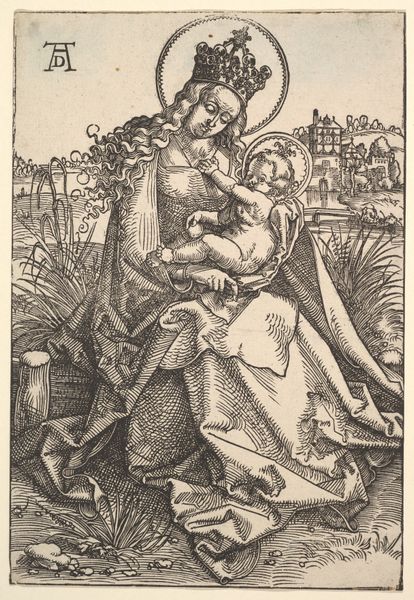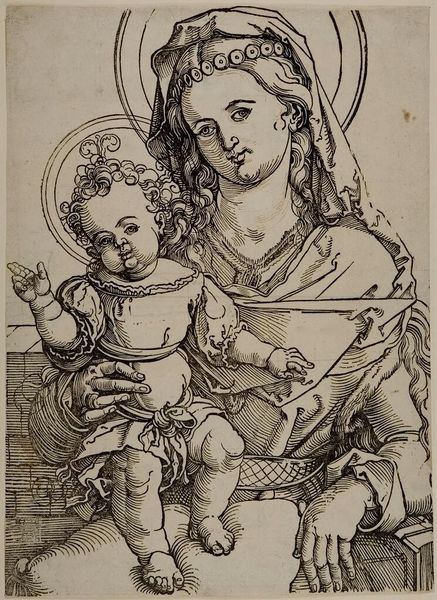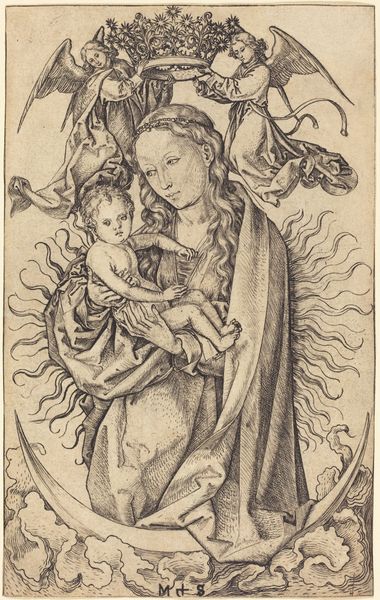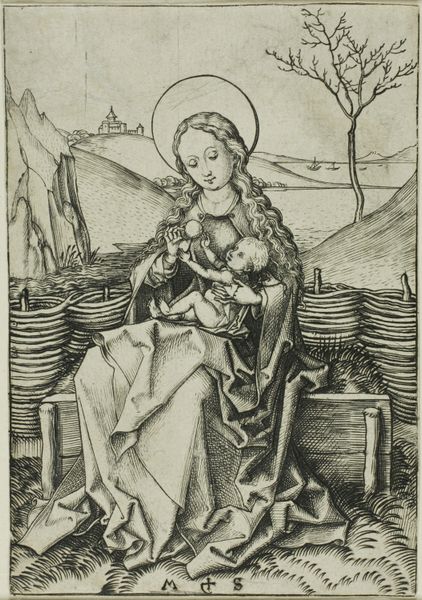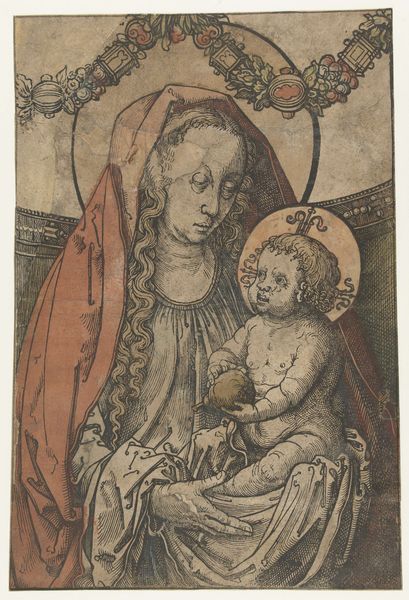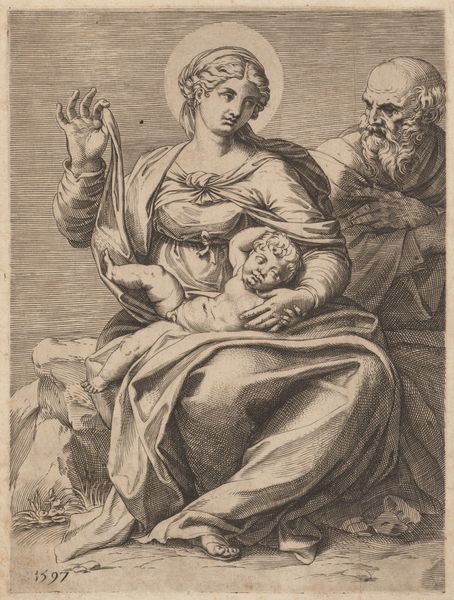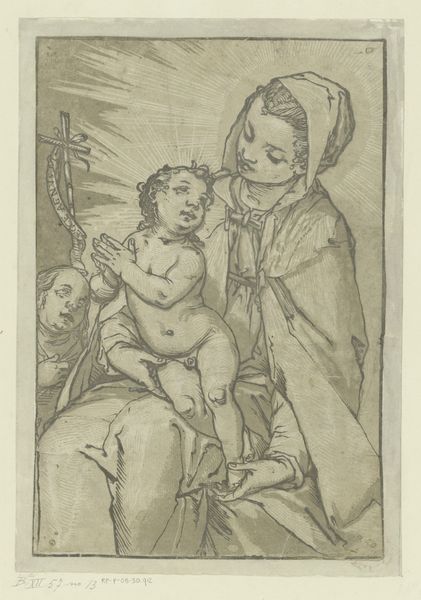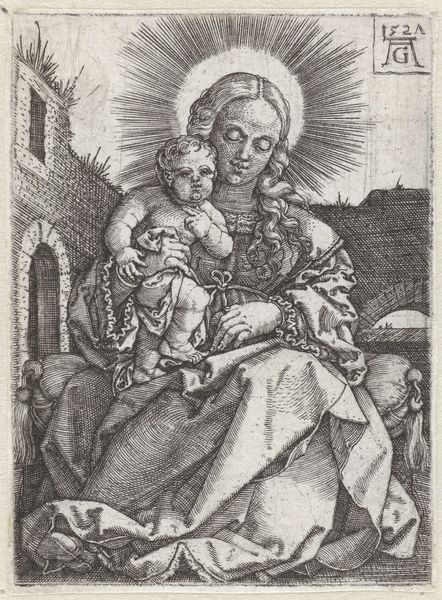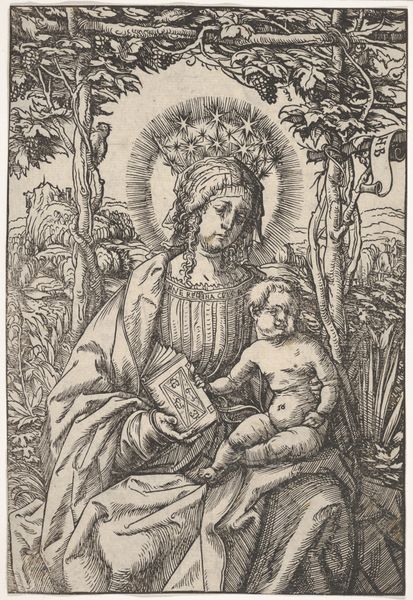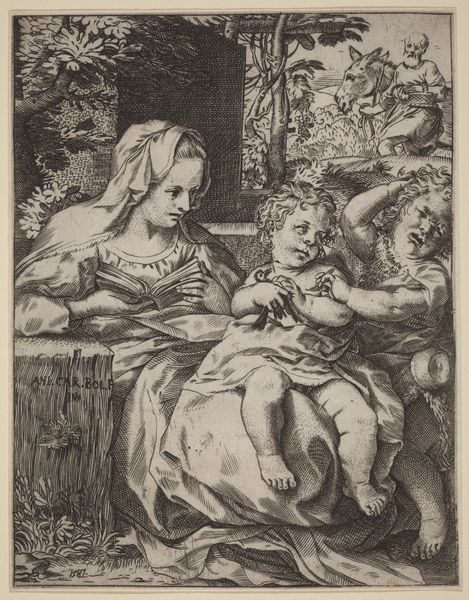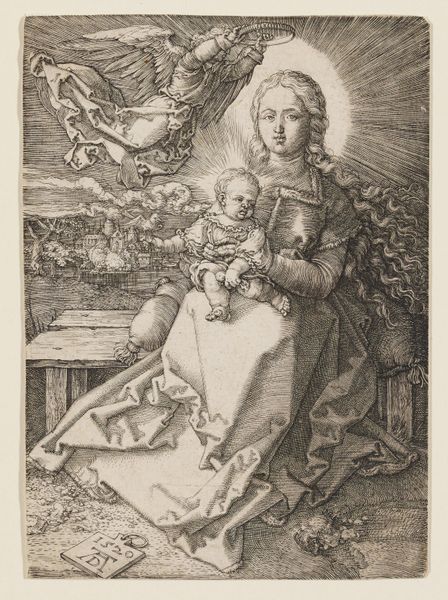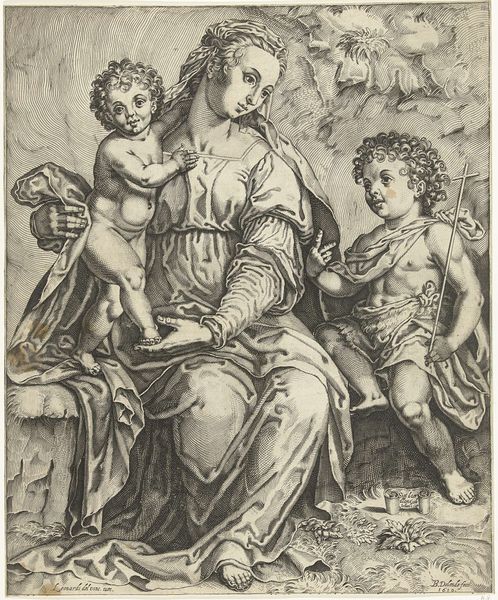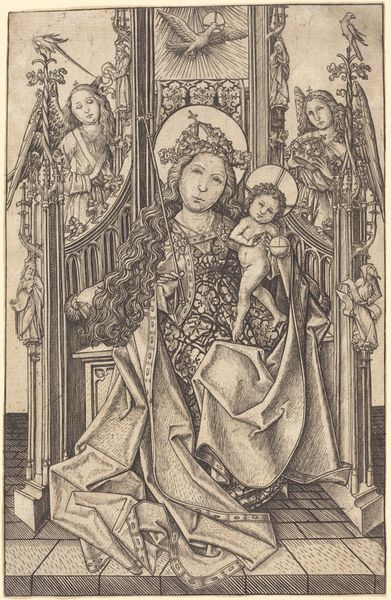
drawing, print, engraving
#
drawing
# print
#
figuration
#
northern-renaissance
#
engraving
Dimensions: 18 × 13 in. (45.72 × 33.02 cm)
Copyright: Public Domain
Sebald Beham produced this woodcut, Virgin and Child, in the first half of the 16th century. The print reveals how the religious image was changing during the Reformation in Germany. Before the Reformation, the Catholic Church was the dominant institution in Europe, and it commissioned countless artworks. Artists and craftsmen produced paintings, sculptures, and prints with the purpose of glorifying God. Here, the Virgin Mary is portrayed as a mother, she is no longer the Queen of Heaven but a humble, gentle caregiver, with a regular German face. Note that the image, though religious, is grounded in the real, everyday life of the place where it was made. Martin Luther argued that salvation came through faith and the Bible alone; this print suggests that God and holiness were to be found not in grand cathedrals but in every home. Art history reminds us that the meaning of art is never fixed but is always shaped by the society and institutions in which it is created. Examining religious and political documents from 16th-century Germany might help us to understand Beham’s intentions further.
Comments
minneapolisinstituteofart about 2 years ago
⋮
Virgin and Child was clearly meant to be seen from a distance. The large, uncluttered composition allows the flowing lines to stand out. Its creator, Sebald Beham, meant it for public devotion of the Madonna. He used simple patterns of lines to make the cutting of the printing block quicker and cheaper, an important consideration for a work of art intended for a middle-class market. Most examples were probably affixed to walls and have long since perished from exposure to weather, insects, and vandalism. Of the hundreds printed, only about a dozen survive. The enclosure within which Mary sits is the "hortus conclusis," the enclosed garden that separates her from the outside world, symbolizing a sort of new Eden for the pure Virgin. Common in late-medieval Marian iconography, the idea echoes the Songs of Solomon (4:12): A garden locked is my sister, my bride,a spring locked, a fountain sealed.
Join the conversation
Join millions of artists and users on Artera today and experience the ultimate creative platform.
